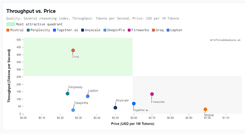
Description
The US electrical grid includes over 500,000 miles of high-voltage transmission lines and more than 5 million miles of lower voltage distribution lines. These lines supply power from nearly 6,000 large power plants to provide more than 4 trillion kilowatt-hours of electricity each year. However, the grid is facing several challenges that threaten its ability to distribute electric power. The introduction of variable sources of electricity, such as wind and solar, has led to an increase in the difficulty of balancing electricity generation and consumption. Additionally, grid reliability has been decreasing since the 1990s due to increasing extreme weather and a lack of maintenance. Large-scale electrification will also require an enormous increase in electric power generation, which will be made more difficult by the fact that it has become increasingly difficult to build electrical infrastructure in the US. The article then discusses two strategies for addressing these challenges: the hard path and the soft path. The hard path involves leaning into the strategy of scale and expanding the grid, while the soft path involves transitioning to smaller-scale energy technologies. Ultimately, the author suggests that a combination of both approaches will be necessary to build an electric power system that can reliably provide the power that's needed, where it's needed.





